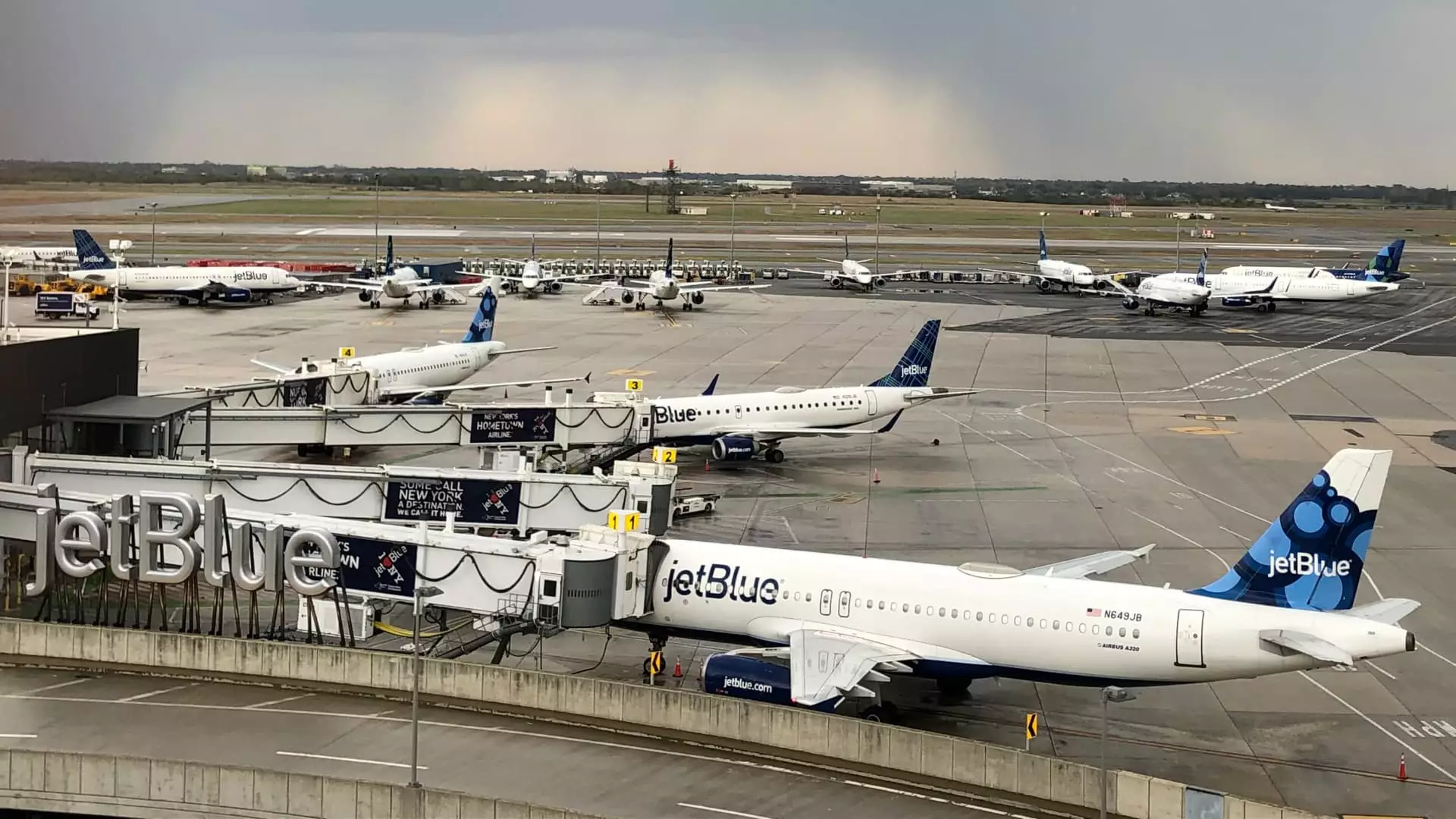In an unexpected move, JetBlue Airways is embarking on a significant transformation that sees the low-cost carrier stepping into a realm traditionally occupied by its higher-priced counterparts: the establishment of airport lounges. This decision marks JetBlue’s first venture into offering lounges—an initiative aimed at enticing affluent travelers and enhancing its brand appeal. As travel dynamics shift, the airline’s strategy encompasses more than just lounges; it is a redefinition of its service model aimed at curving profitability in a competitive landscape.
JetBlue plans to open its inaugural lounge at John F. Kennedy International Airport (JFK) in New York by late next year, with an additional facility in Boston Logan International Airport following shortly afterward. The lounges, designed to complement the airline’s existing Mint business class service, will cover large operational footprints—8,000 square feet in New York and 11,000 square feet in Boston. This move suggests that JetBlue is keenly aware of the insatiable appetite for premium travel experiences among consumers, particularly as the airline industry continues recovering from the disruptions caused by the pandemic.
The decision to enter the lounge space reflects a broader trend among airlines attempting to cultivate loyalty from high-spending travelers. By providing exclusive access to select passenger groups—such as those traveling in Mint class, high-ranking loyalty members, and holders of a new premium credit card—the airline aims to elevate its brand perception and drive profitability through ancillary revenues.
JetBlue’s strategy is reminiscent of moves made by larger airlines, such as Delta, American, and United, who have successfully generated significant revenues through premium lounges and lucrative credit card partnerships. The introduction of a new credit card in collaboration with Barclays aligns with the strategies of its larger competitors who have harnessed substantial financial benefits through these arrangements. This card will serve not only as a means for travel rewards but also as a conduit to lounge access, effectively deepening customer engagement with the JetBlue brand.
However, this approach presents a challenge Frankly, JetBlue must contend with existing market sentiments regarding airport experiences. The airline’s head of marketing, Jayne O’Brien, underscored the importance of careful management of lounge capacity to avoid disappointing guests—an issue seen in the overcrowded lounges of competitors. Hence, a balance must be struck between attracting customers and maintaining a premium experience.
JetBlue’s pursuit of higher earnings comes at a time when the airline industry is scrutinizing operational efficiencies amid economic turbulence. Despite deferring the delivery of new Airbus aircraft and cutting numerous routes, the airline’s vision includes optimizing the deployment of its existing inventory, particularly those equipped with JetBlue’s highly regarded Mint cabin. This cabin boasts lie-flat seating, premium dining options, and various exclusive amenities, fostering the airline’s shift towards higher service standards.
In contrast, other airlines, including Southwest, Spirit, and Frontier, are innovating their own service offerings in a competitive bid for heightened consumer interest. Southwest is particularly noteworthy as it explores enhancements such as additional legroom—a move suggesting that their traditional low-cost model may accommodate more premium facets over time.
JetBlue Airways is at a pivotal juncture as it seeks to redefine its identity. The introduction of lounges marks more than just a physical expansion of services; it represents a holistic shift that reflects changing consumer demands and industry standards. By diversifying its offerings and targeting lucrative demographics, JetBlue is positioning itself for a future marked by growth, profitability, and relevance in the fiercely competitive airline arena. The question remains: can JetBlue successfully transcend its low-cost roots while maintaining its signature value-driven ethos? Only time will tell if this strategy reaps the desired rewards or leads to unforeseen challenges.

